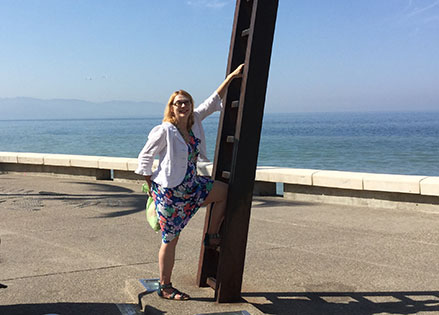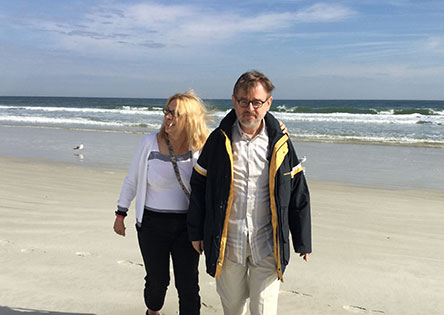
Cardiac Rehab helped Conni Kostuik to lead a full life after her heart attack. She went to Mexico in December 2014. (Photo: Conni Kostuik)
Conni Kostuik's heart attack wasn't like those you see in the movies.
She didn't have intense chest pain, she didn't grab her heart and she didn't collapse.
For Conni, the first sign was nausea, then a faint tingling in her hands.
"I knew something was wrong, but I didn't know what it was," she explains. "I later learned at Cardiac Rehab that women often experience different heart attack symptoms than men."
Within minutes of arrival, paramedics confirmed that Conni had a medium-sized heart attack.
Related to this story:
Women's heart health
"I was so not expecting to have a heart attack," Conni recalls. At 58, she was in good health: she didn't smoke, she ate well, and she had no symptoms prior to the event.
Women's heart attacks often mirror the one Conni experienced, says Joan Kitchen, Cardiac Rehabilitation Supervisor at the UHN Cardiovascular Prevention and Rehabilitation Program at the Toronto Rehab site .
"Women's symptoms tend to be much subtler than men's," she explains. "For women, the number one symptom is fatigue and an upset stomach. These are vague symptoms and they sometimes get missed."
At the UHN Cardiovascular Prevention and Rehabilitation Program and its two sites (Toronto Rehab Rumsey Centre and Toronto Western Hospital) women's-only classes are offered to uniquely meet the needs of women with cardiovascular disease. Kitchen runs one of the women's-only cardiac rehab programs at the Toronto Rehab site. Called
Women with Heart, it caters cardiac rehabilitation, education and lifestyle changes specifically to women. The program teaches patients about some nuances specific to women's health.
Women also have the option of attending a co-ed program, which Kitchen facilitates as well. But the two classes are different, she explains.
"One observation I have noticed is that when the class is co-ed, women don't ask as many questions," she says. "When they're in the women's program, the breadth and depth of their questions are much greater. They feel safe. I love that part of it."
Bouncing back
Conni started attending cardiac rehabilitation sessions a few months after her heart attack.
At the program, she says she immediately felt welcomed and supported.
"The environment was so nurturing," Conni remembers. "It was all about women's health and that really made a difference to me."
The program offered her a supervised exercise plan and helped her set goals with her physical fitness.

Conni walks regularly, and was able to plan out a fitness plan at Cardiac Rehab. In January 2015, she was able to take a long walk on the beach in Florida with her husband. (Photo: Conni Kostuik)
On top of that, Conni had access to classes specific to what she was interested in and needed most.
"We tailor the programs – both the women's-only and the co-ed programs – to each individual patient's needs," explains Kitchen.
A session with a dietitian taught Conni about how people can connect eating with their emotions, and how she could improve her calcium intake. After a sleep stress course, Conni took a sleep study and found out she had sleep apnea.
"I always thought I was an excellent sleeper – but it turns out I used to wake up about 140 times a night," she says. Equipped with a Continuous positive airway pressure (CPAP) machine, Conni now feels "100 per cent better."
Safe space
For six months, Conni continued to attend the weekly cardiac rehabilitation sessions and attended women's counselling sessions where patients can talk informally about their experiences, symptoms and progress.
"I have friends in my life but most of them have not had heart attacks so they have a different kind of listening for health," Conni says. "It's wonderful to know people that have shared something with you who can sometimes empathize better than anyone else."
Now that she's finished the cardiac rehabilitation program, Conni goes back for a 'graduate' course – the On-Track program.
"Continuing to go to the On-Track program where there is someone there that could help me if I ever get in trouble is such a relief," she explains.
The programs at TR and the education they've offered to Conni is a large part of why she says she feels more certain in her heart health than she did right after her heart attack.
Kitchen says that's something she often notices in patients who attend cardiac rehabilitation: "Patients' confidence goes up and their anxiety levels go down."
"Cardiac rehab gives them back their lives."
